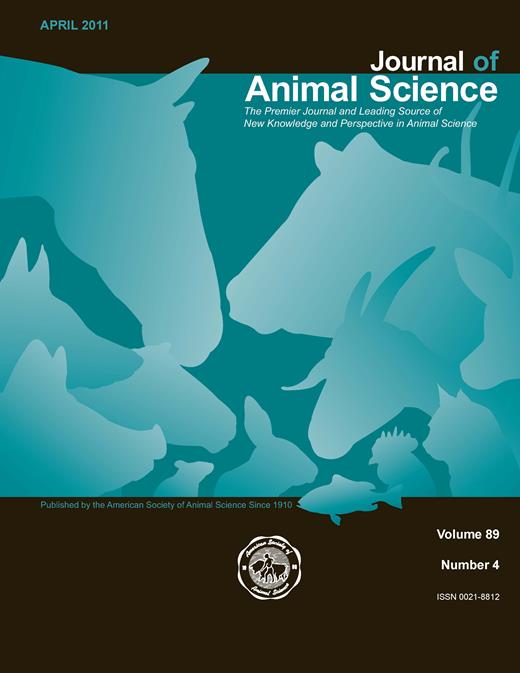-
Views
-
Cite
Cite
R. E. Martin, D. C. Mahan, G. M. Hill, J. E. Link, J. S. Jolliff, Effect of dietary organic microminerals on starter pig performance, tissue mineral concentrations, and liver and plasma enzyme activities, Journal of Animal Science, Volume 89, Issue 4, April 2011, Pages 1042–1055, https://doi.org/10.2527/jas.2009-2384
Close - Share Icon Share
ABSTRACT
Weanling pigs (n = 160) were used to evaluate dietary essential microminerals (Cu, Fe, Mn, Se, and Zn) on performance, tissue minerals, and liver and plasma enzymatic activities during a 35-d postweaning period. A randomized complete block design with 5 treatments and 8 replicates was used in this study. Organic microminerals were added to complex nursery diets at 0 (basal), 50, 100, or 150% of the requirements of microminerals listed by the 1998 NRC. A fifth treatment contained inorganic microminerals at 100% NRC and served as the positive control. Pigs were bled at intervals with hemoglobin (Hb), hematocrit (Hct), glutathione peroxidase, and ceruloplasmin activities determined. Six pigs at weaning and 1 pig per pen at d 35 were killed, and the liver, heart, loin, kidney, pancreas, and the frontal lobe of the brain were collected for micromineral analysis. The liver was frozen in liquid N for determination of enzymatic activities. The analyzed innate microminerals in the basal diet met the NRC requirement for Cu and Mn but not Fe, Se, and Zn. Performance was not affected from 0 to 10 d postweaning, but when microminerals were added to diets, ADG, ADFI, and G:F improved (P < 0.01) from 10 to 35 d and for the overall 35-d period. Pigs fed the basal diet exhibited parakeratosis-like skin lesions, whereas those fed the supplemental microminerals did not. This skin condition was corrected after a diet with the added microminerals was fed. When the basal diet was fed, Hb and Hct declined, but supplemental microminerals increased Hb and Hct values. Liver catalase activity increased (P < 0.01) when microminerals were fed. The Mn superoxide dismutase activity tended to decline quadratically (P = 0.06) when supplemental microminerals were fed above that of the basal diet. Liver plasma glutathione peroxidase activities were greater (P < 0.01) when dietary organic and inorganic micromineral were fed. Liver concentrations of microminerals increased linearly (P < 0.01) as dietary microminerals increased, indicating that the liver was the primary storage organ. Micromineral tissue concentrations were least in pigs fed the basal diet and increased (quadratic, P < 0.01) to the 50% level of organic microminerals in the various tissues collected. The results indicated that innate microminerals, Cu and Mn, from a complex nursery diet may meet the micromineral needs of the weaned pig, but the need for Fe, Se, or Zn was not met by the basal diet.





